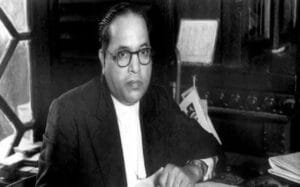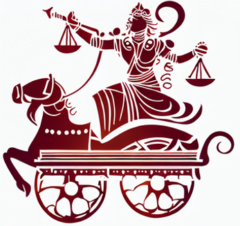
In the tapestry of India’s past and present, the story of caste, reform, and resilience unfolds like a riveting saga. This article journeys from ancient invasions and forgotten heroes to contemporary controversies, connecting dots that reveal how historical sacrifices shape today’s debates on equality and power. By tracing this timeline, we uncover layers of truth often buried under modern narratives, inviting you to relate to the struggles and triumphs that built our nation.
Brahmin Bloodshed in Invasions: The First Roadblocks to Foreign Domination
India’s history is marred by waves of invaders who saw Brahmins as the ultimate obstacle to conquest and conversion. These priests, scholars, and guardians of knowledge preserved Hindu dharma, making them prime targets for elimination. Mahmud of Ghazni’s 11th-century raids on Somnath Temple slaughtered millions, including Brahmins, to dismantle temples and scriptures that resisted Islamization. Mughal rulers like Aurangzeb executed Brahmin intellectuals en masse, viewing them as barriers to forced conversions and empire-building. The Portuguese Inquisition in Goa burned Brahmins alive, enforcing Christianity through terror. Even British colonizers crushed Brahmin-led uprisings in 1857, executing priests to pave the way for missionary activities. These genocides—claiming over 300 million lives in total—aimed to erase India’s cultural core, as Brahmins orally safeguarded Vedas during library burnings. This era of targeted violence set the stage for enduring stereotypes yet highlights Brahmins’ role as unyielding defenders of indigenous faith.
Epic Brahmin Sacrifices: Forging India’s Soul Through Ages of Peril
Beyond invasions, Brahmins’ devotion fueled India’s survival and progress. They memorized and preserved ancient texts like the Vedas amid Mughal destructions, risking execution to keep knowledge alive. Legendary figures like Chanakya masterminded empires with strategic wisdom, while Peshwa Bajirao valiantly repelled Afghan incursions. In freedom movements, leaders like Bal Gangadhar Tilak and Gopal Krishna Gokhale sacrificed personal lives for independence and social reforms. Ancient rituals, such as the symbolic Purushamedha, embodied their selflessness for societal dharma. These acts of courage and intellect not only resisted foreign rule but laid foundations for modern governance and education, often at great personal cost—making Brahmins the unsung architects of India’s resilience.
Decoding Manusmriti and Varna: Ancient Merit Systems Echoing Today’s Hierarchies
Rooted in antiquity, Manusmriti’s Varna framework organized society by profession, not rigid birth: Brahmins as educators, Kshatriyas as protectors, Vaishyas as traders, and Shudras as laborers—designed for functional harmony based on merit and duty. Contrary to myths, it doesn’t prescribe untouchability; that notion was later fabricated, distorting its emphasis on dharma. Fast-forward to today: This mirrors modern protocols where ordinary citizens can’t directly approach high officials like DMs, SPs, MLAs, MPs, the PM, or President—access is restricted for efficiency, just as ancient hierarchies protected roles without inherent oppression. In government departments, ranks like IAS officers (knowledge bearers) parallel Brahmins, while military aligns with Kshatriyas—proving Varna’s core was practical, merit-driven structure, not discrimination. Colonial misinterpretations hardened it into caste rigidity, but understanding this bridges past wisdom to present systems.
Vishnu’s Buddha Incarnation: Setting the Stage for Ambedkar’s Spiritual Pivot
Hindu lore integrates Buddha as Vishnu’s ninth avatar, incarnated to reform Vedic excesses, delude demons, and restore balance—blending Buddhism into dharma’s fold. This assimilation influenced later reformers, including Dr. B.R. Ambedkar, who in 1956 led a mass conversion to Buddhism in Nagpur with over 500,000 followers, rejecting Hinduism’s perceived inequalities. Ambedkar crafted Navayana Buddhism, a rationalist version, explicitly denying Buddha as Vishnu’s avatar in his 22 vows. He spurned Islam or Christianity, deeming them foreign with their own divides that could “denationalize” converts. This choice protested untouchability but overlooked Buddhism’s deep Hindu philosophical ties, marking a pivotal shift in 20th-century identity politics.
Ambedkar’s Brahmin Benefactors: Unsung Support in His Formative Years
As India approached independence, Dr. B.R. Ambedkar’s journey exemplifies cross-caste alliances. Born Bhimrao Sakpal, his surname “Ambedkar” came from Brahmin teacher Mahadev Ambedkar, who mentored him, shared meals, and altered records to aid his education despite barriers. Brahmin writer Krishnaji Arjun Keluskar connected him to Maharaja Sayajirao Gaekwad, funding his studies at Columbia and LSE. These acts of kindness propelled Ambedkar’s global education and constitutional role, challenging narratives of universal Brahmin antagonism and showing how personal empathy transcended divides.
Ambedkar’s Manusmriti Critique: A Translation Trap from the Past
Ambedkar’s 1927 burning of Manusmriti symbolized his fight against caste, but he admitted lacking Sanskrit knowledge, relying on Western translations like Max Muller’s. Critics, including Jagadguru Rambhadracharya, argue this led to biased views, as colonial renditions exaggerated negatives without context. Original texts stress merit-based dharma, not oppression—had Ambedkar read Sanskrit, his condemnation might have softened. This historical misstep fueled anti-Manusmriti sentiment, influencing post-independence reforms.
Ambedkar’s Warnings on Muslims: Fears of Division in a New Nation
Amid Partition’s turmoil, Ambedkar voiced concerns about Muslims, seeing Islam as fostering separatism. He labeled Hindus as “kafirs” in Muslim eyes, predicting conflict under Hindu-majority rule. In “Pakistan or the Partition of India,” he proposed population transfers for non-integrating Muslims to avert violence. He discouraged Dalit conversions to Islam, fearing loss of national identity and alignment with foreign loyalties. Critiquing Muslim “brotherhood” as exclusionary and caste-ridden, Ambedkar prioritized Hindu unity—a stance shaped by era’s bloodshed but relevant to ongoing communal debates.
Reservation’s Modern Meltdown: From Upliftment Promise to Merit Crisis
In independent India, reservations aimed at equity but now face backlash for sidelining merit: Perfect scorers (often general category) lose opportunities while zero-mark candidates advance via quotas, risking institutional collapse. NEET cases exemplify this, with unqualified entrants in medicine eroding standards and public trust. Intended as temporary, it perpetuates divides, benefiting elites over the needy and stifling innovation in key sectors. This “reverse discrimination” echoes historical inequities but in reverse, threatening national progress.
Chandra Shekhar Azad’s Paradox: Brahmin Name, Anti-Brahmin Game for Votes
Chandra Shekhar Azad, leader of Azad Samaj Party (formerly Bhim Army), adopts the name of revolutionary Brahmin Chandra Shekhar Azad, yet champions anti-Brahmin causes to woo SC/ST votes. He criticizes upper-caste dominance, pushes reservations, and courts Dalits/Minorities, but faces accusations of opportunism—using a heroic Brahmin legacy while stoking caste tensions. His remarks on Hindu deities and events like Maha Kumbh spark backlash, seen as vote-bank politics over genuine reform. This irony exposes how leaders exploit divisions for power.
From invasions’ scars to today’s policy pitfalls, these interconnected stories urge reflection: Honoring all sacrifices fosters true equality. Share to ignite meaningful change!


